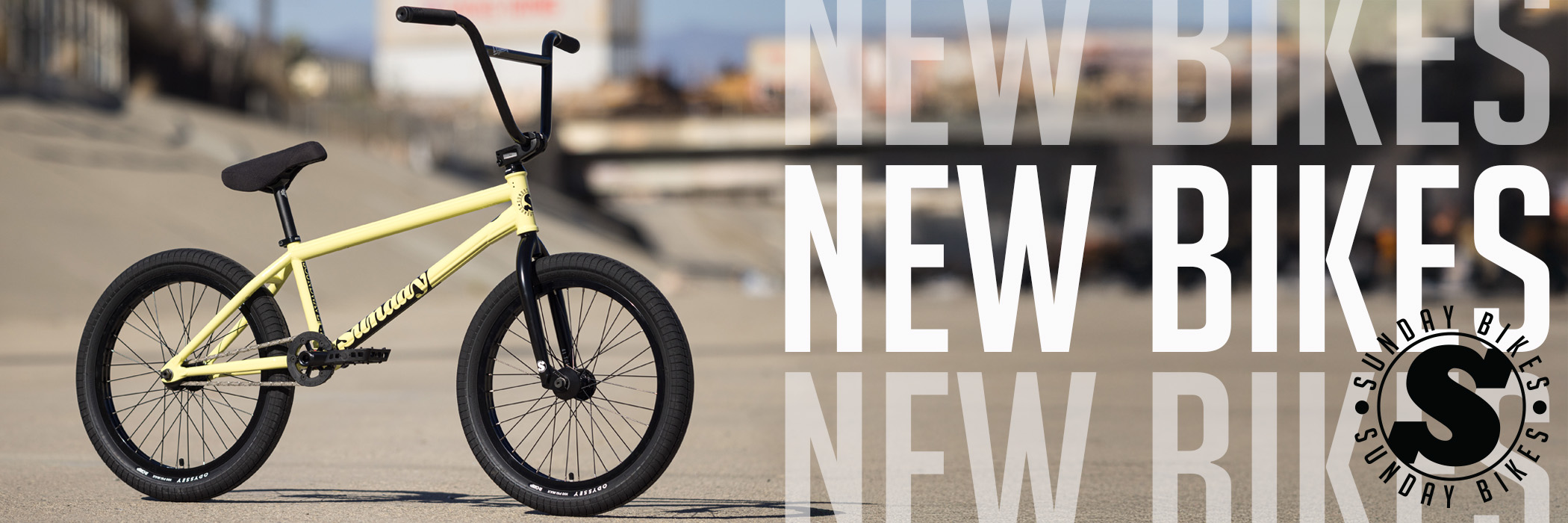Wave Tubing Xplained!
Sunday introduced the Wave downtube at Interbike in 2007. This unique feature quickly became a centerpiece in our goal of bringing riders a frame that’s both strong and light. Surprisingly, a lot of people didn’t notice the Wave when we initially showed it at Interbike, and to this day some riders STILL haven’t noticed it. There are also riders out there that are unaware of how well the tube design really works. However, with that said, I have heard countless stories from Sunday frame owners about what their Wave downtubes have been through. It’s understood that the tube won’t take “everything” thrown at it (after all, it’s still just made of 4130 chromoly), but it will take a lot of the abuse that ordinary round tubes won’t, and once the downtube of a frame has been damaged, it’s only a matter of time before a new frame will be needed. At this point it’s been over two years since we began testing the original prototypes, so I figured that it was time to show some photos of what a Wave downtube looks like on the inside.
So, why would someone need a downtube shaped like this? Well, most modern frames use double-butted tubes. What this means is that the wall thickness is thicker at the end of the tube and thinner in the middle. This allows the frame to use a lighter tube while still retaining the strength needed to get a good weld at the frame’s headtube and bottom bracket shell. Now, as I’m sure you’ve already figured out, the thinner walls of ultralight butted tubes are easier to dent, and in many cases they’re being used in one of the most vulnerable areas of the bike. When you dent the frame in an area like this, the tube becomes weakened structurally, making the frame much more susceptible to cracking, and then ultimately this cracking can lead to a failure if the frame is not replaced. It has always been of utmost importance for us to address this issue on frames, and our solution was to incorporate the double-butted Wave downtube shape.
A lot of people have asked me how the tube is made, and I always tell them that it’s a simple but very effective design. As you can see, there isn’t any excess material added to make the Waves, it’s just a simple change in the cross-sectional shape of the tube. Here are two photographs that show the interior of the Wave on the “top” and “bottom”. The shadows help to illustrate the tube’s shape. On the left, you can see the light variation caused by the wave, while on the right you can only see a smooth lighting surface because there are no waves present.
Although the design is simple, the benefits should be obvious. It’s much easier to dent a tube that has a large, round, non-reinforced diameter, than one that IS reinforced with smaller diameter waves or ridges. Applying the waves to the lower, most vulnerable area of the downtube not only keeps the Waves hidden, but it also makes the downtube much more durable than an ordinary round tube. So, while it’s still possible to dent a Wave tube, you will find that when dents occur that they will mostly be confined to the smaller Waves, rather than all the way across the tube as a whole, which is what tends to happen on a conventional frame.
When we introduced the Wave frame back in 2007, its downtube was larger in diameter than it is today. This photo illustrates the difference between the original Wave frame’s downtube size and the slimmer size that’s used on the 2nd Wave frame. This smaller size accompanies the tapered seat and chain stays and the smaller dropout, giving the 2nd Wave frame a slimmer look when compared to its predecessors. The new size also allowed us to lighten the frame, while still retaining the Sunday frame’s legendary reputation for strength and durability, as proven through long term lab and real world ride testing.
The Wave downtube is just one of the many unique features on a Sunday frame. Look for more insight on our other features soon!




